This post is Part II in my blog post series on our road trip through the Peloponnese, a peninsula in southern Greece. This part of the road trip covers our start in Nafplio, visits to some ancient sites in the surrounding area, and arrival back to Nafplio. Make sure you read Part I first, available here.
We woke up and the sun shone in beautiful Nafplio for day 2 of our excellent Peloponnese road trip adventure. As I mentioned in my last post, we stayed the night in the town of Nafplio. Legend has it that Nauplios, a son of Poseidon, the sea god, founded the town. Nauplius was a famous navigator who discovered the constellation Ursa Major (Great Bear). A navigator seems like an appropriate founder profession because even just by walking around Nafplio you can tell it must have been a great sea power at some point in history. We had reserved the afternoon to explore the town, so more on Nafplio later!
 Before driving off, we had breakfast in Nafplio at Kalimera, a breakfast restaurant. They serve lovely, big Greek breakfast platters. We had the full traditional Greek breakfast, including coffee, freshly squeezed orange juice, sourdough bread, homemade marmalades and butter, a platter of cold cuts, cheeses, olives, dakos (Greek bruschetta) and a homemade pie, traditional kayianas (scrambled eggs with tomatoes and olives) and Greek yoghurt. Everything was delicious but, as you can imagine, we were so incredibly full afterwards!
Before driving off, we had breakfast in Nafplio at Kalimera, a breakfast restaurant. They serve lovely, big Greek breakfast platters. We had the full traditional Greek breakfast, including coffee, freshly squeezed orange juice, sourdough bread, homemade marmalades and butter, a platter of cold cuts, cheeses, olives, dakos (Greek bruschetta) and a homemade pie, traditional kayianas (scrambled eggs with tomatoes and olives) and Greek yoghurt. Everything was delicious but, as you can imagine, we were so incredibly full afterwards!

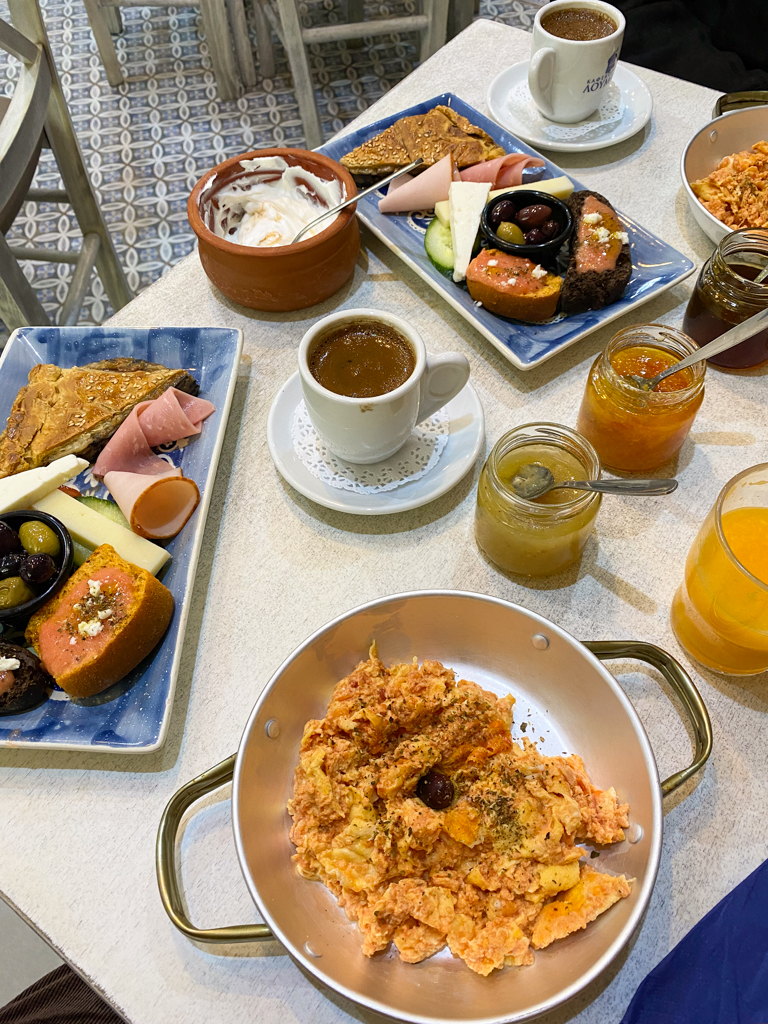
Mycenae, Broad-Streeted and Golden
Rage – Goddess, sing the rage of Peleus’ son Achilles,
murderous, doomed, that cost the Achaeans countless losses,
hurling down to the House of Death so many sturdy souls,
great fighters’ souls, but made their bodies carrion,
feasts for the dogs and birds,
and the will of Zeus was moving toward its end.
Begin, Muse, when the two first broke and clashed,
Agamemnon lord of men and brilliant Achilles.Lines 1-8, Book I, The Iliad by Homer
After our magnificent breakfast, we drove 30 minutes north to the archaeological site of Mycenae. The Late Mycenaean period (1400–1100 BCE) was one of great prosperity in the Peloponnese, with Mycenae becoming the dominant power during this time. Its fleet controlled the nearer seas and colonised the Cyclades, Crete, Cyprus, the Dodecanese, northern Greece and Macedonia, western Asia Minor, Sicily, and some sites in Italy.
It’s in this historical context that I now bring in the most well-known legend from Greek mythology, the Trojan War. When Helen eloped with Paris, Prince of Troy, her husband, King Menelaus of Sparta, called on his brother Agamemnon for help. Agamemnon, who was himself married to Helen’s sister Clytemnestra, was the overlord of all the Greeks as the King of Mycenae. In 1180 BCE, during the height of Myceane’s dominance and power, Agamemnon gathered together a great fleet and prepared to set sail for Troy. However, he had offended the goddess Artemis, and she sent contrary winds against them. She was only appeased when Agamemnon gave her a sacrifice of his daughter, Iphigenia.

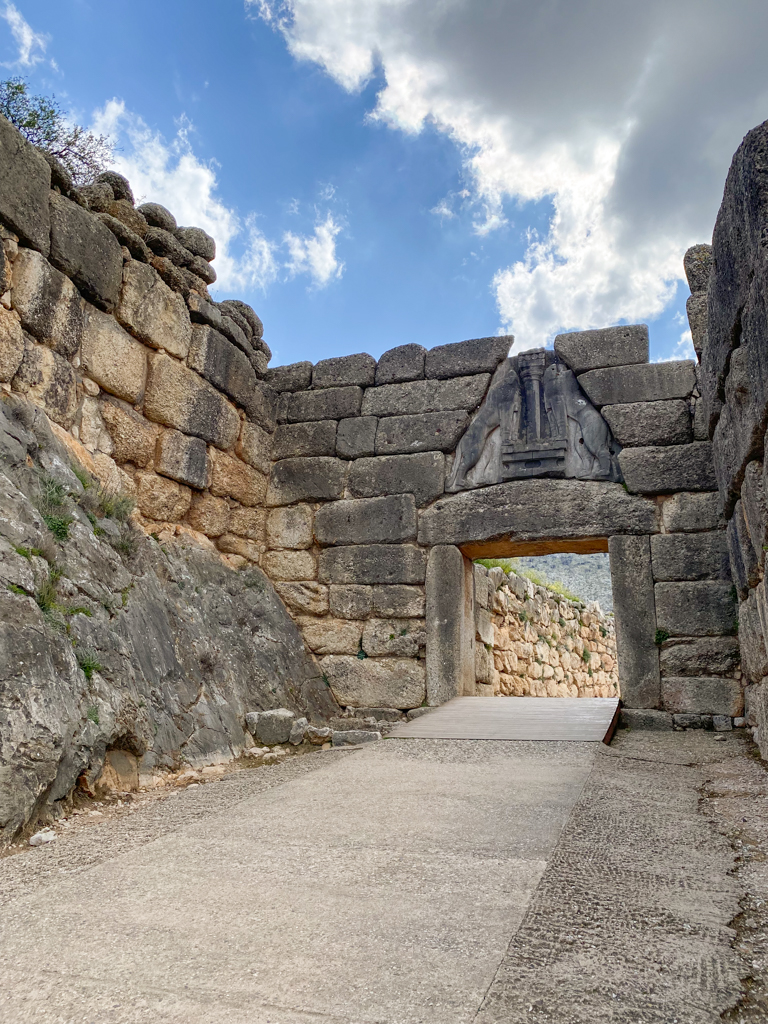
With Agamemnon away at war, Clytemnestra, understandably upset at her daughter’s death, took Aegisthus, an old enemy of Agamemnon’s, as her lover. When her husband eventually returned after the long siege of Troy, Clytemnestra murdered him. by smothering him with a robe while he bathed, before striking him three times with a double-headed axe. The cycle of revenge continued with Agamemnon and Clytemnestra’s two remaining children, Orestes and Elektra, murdering their mother and her lover.
This legend is perhaps one of the most famous in Greek mythology and legend, as it was depicted in Classical Art via sculptures and paintings. It’s mentioned by Homer in both The Odyssey and The Iliad and is used in plays by Aeschylus, Euripides and Sophocles.
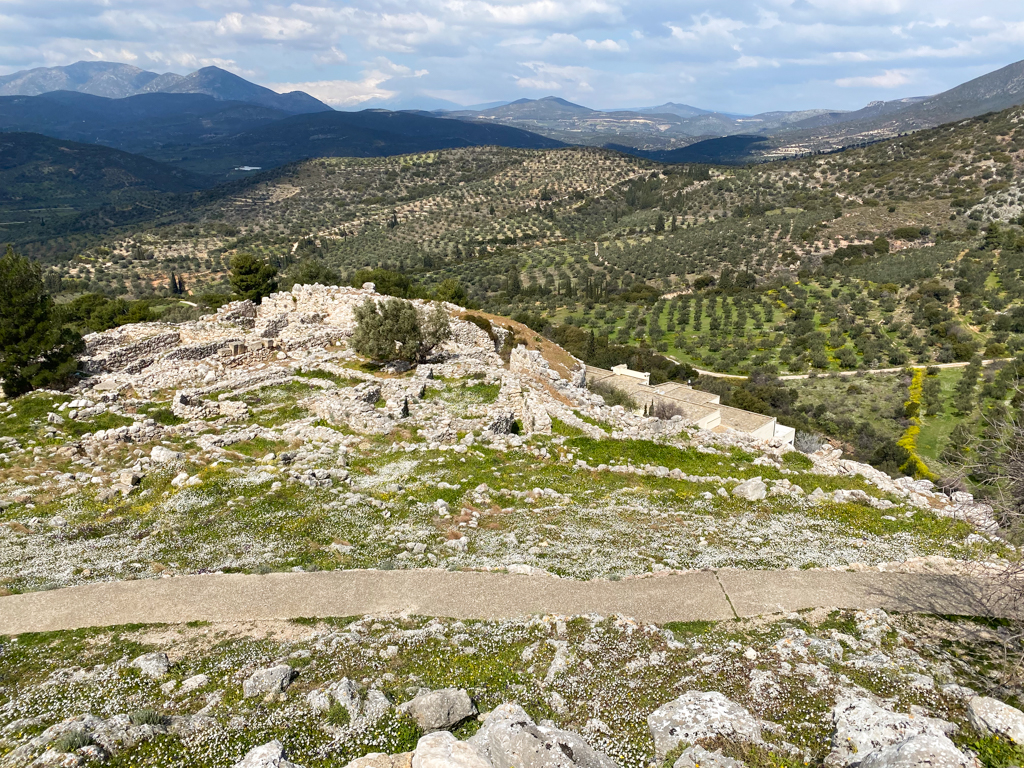
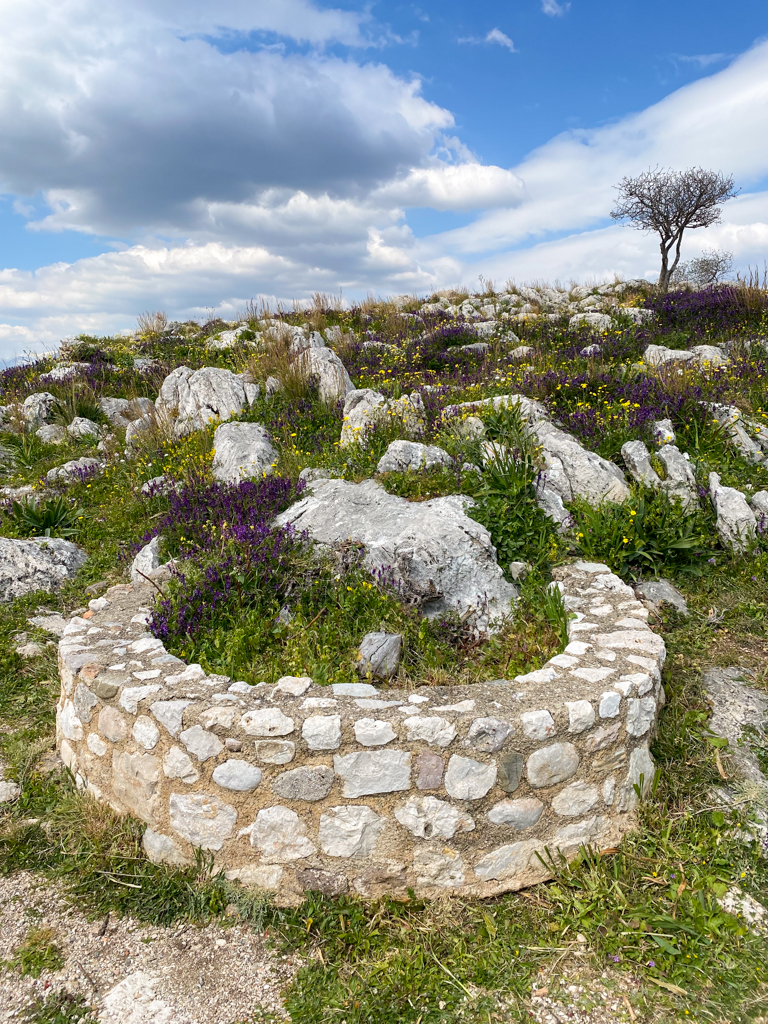
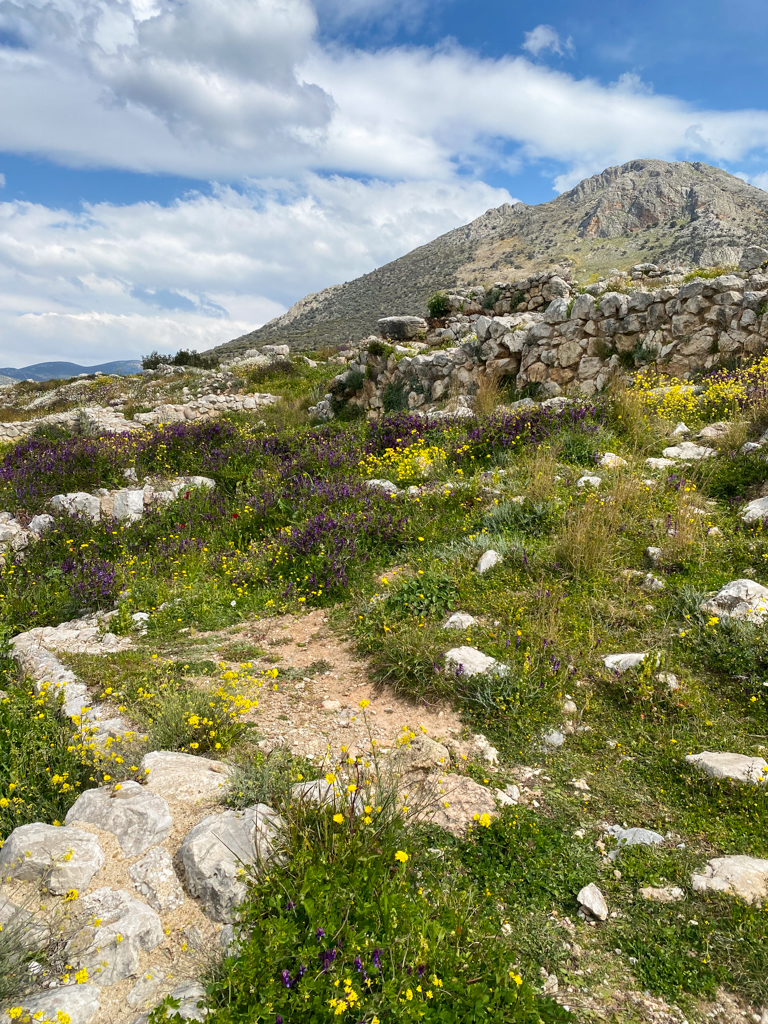
And so, the story of the mythical Agamemnon and his family was set here in Mycenae. Mycenae was founded between two tall conical hills, Profitis Ilias and Sara, on a low plateau dominating the Argive plain and controlling both the land and sea routes. The archaeological site comprises the fortified acropolis and the surrounding funerary and habitation sites.
One of the most impressive sites at Mycenae is the Treasury of Atreus or Tomb of Agamemnon. It is the largest and most elaborate tholos tomb known to have been constructed in the Aegean Bronze Age. A tholos tomb is a round, beehive-shaped structure. Such tombs are really impressive, and there are a few examples here at Mycenae.
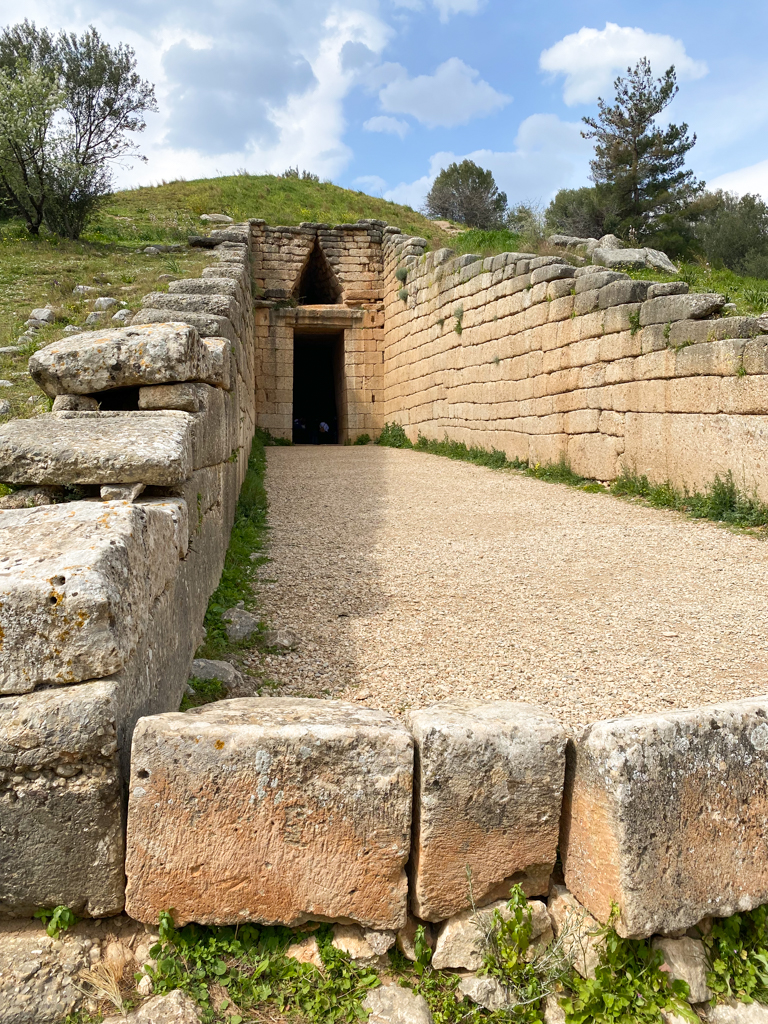 Mycenae is truly an amazing site. There’s so much to see and understand, but it’s that much more interesting because of the ancient mythology tied to the city. I particularly also loved all the wildflowers in between and amongst the ruins.
Mycenae is truly an amazing site. There’s so much to see and understand, but it’s that much more interesting because of the ancient mythology tied to the city. I particularly also loved all the wildflowers in between and amongst the ruins.
Epidaurus
After Mycenae, we drove 45 minutes back toward Nafplio and then eastward to the archaeological site of Epidaurus. Epidaurus was a small town, but it was important because of its sanctuary dedicated to Asklepios, the god of medicine and healing. He was worshipped at various sanctuaries, but the two most famous ones were Kos and Epidaurus.
Initially, in the 2nd millennium BCE, the sanctuary at Epidaurus was a site of ceremonial healing practices with healers. These healers were later enhanced through the cults of Apollo Maleatas in the 8th century BCE and then by Asklepios in the 6th century BCE. The sanctuary of the two gods was developed into the single most important therapeutic centre of the ancient world. Indeed, people from all over Greece visited the sanctuary to be healed and learn about healing practices. These practices were subsequently spread to the rest of the Greco-Roman world and the Sanctuary thus became the cradle of medicine.
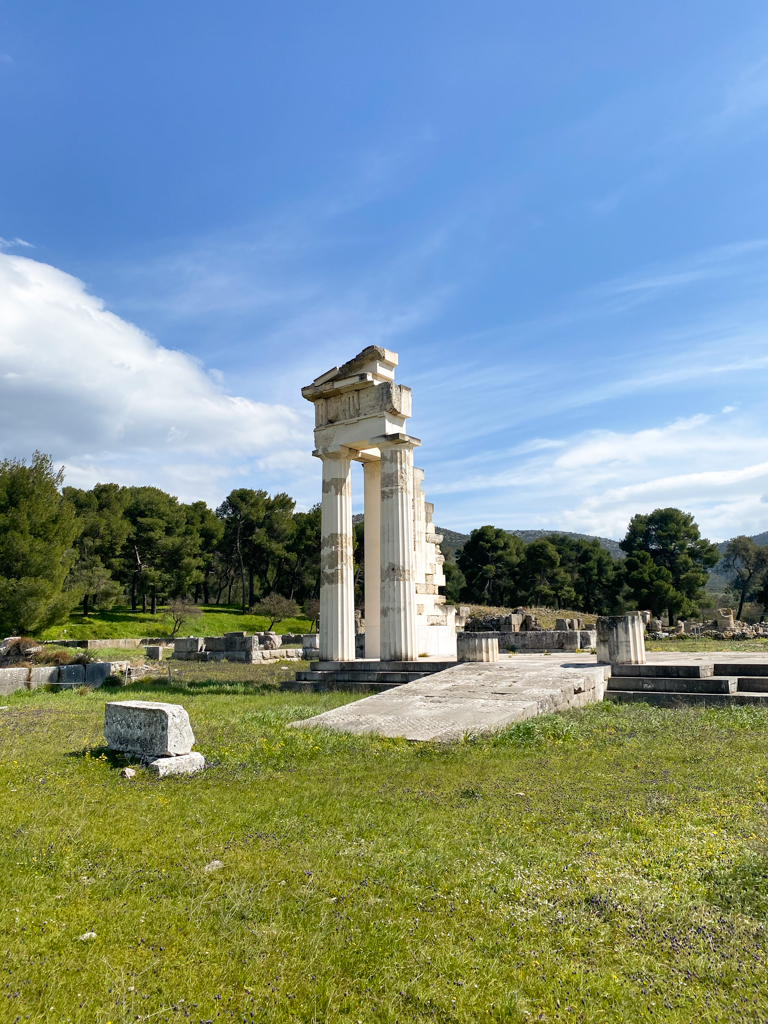
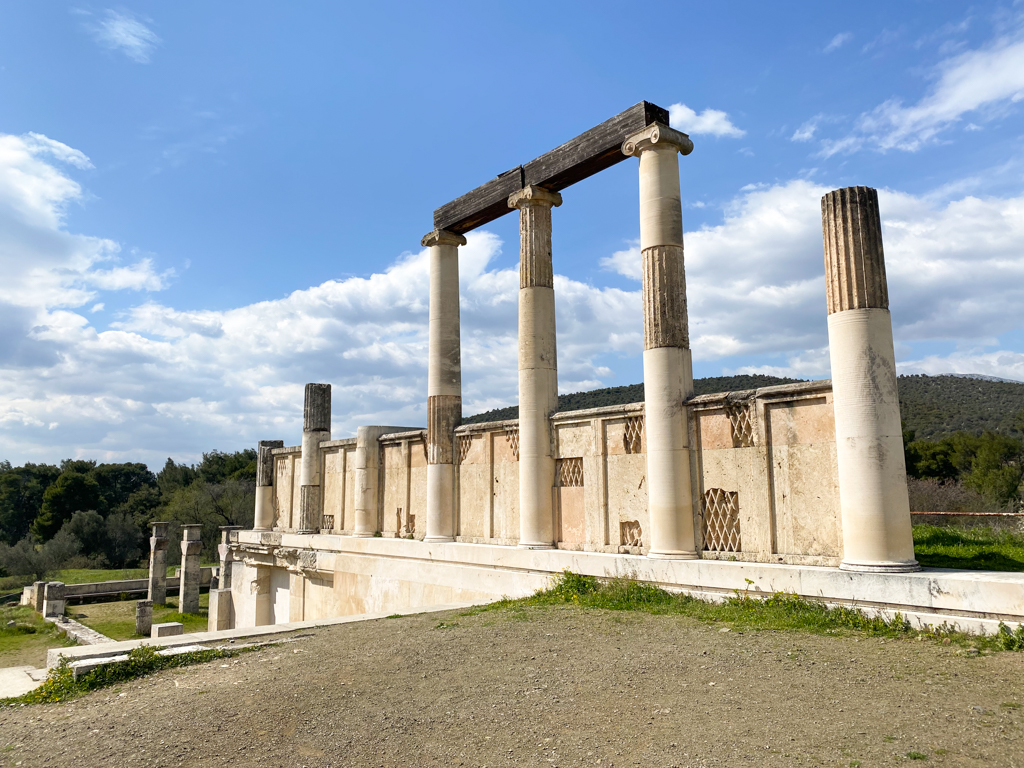
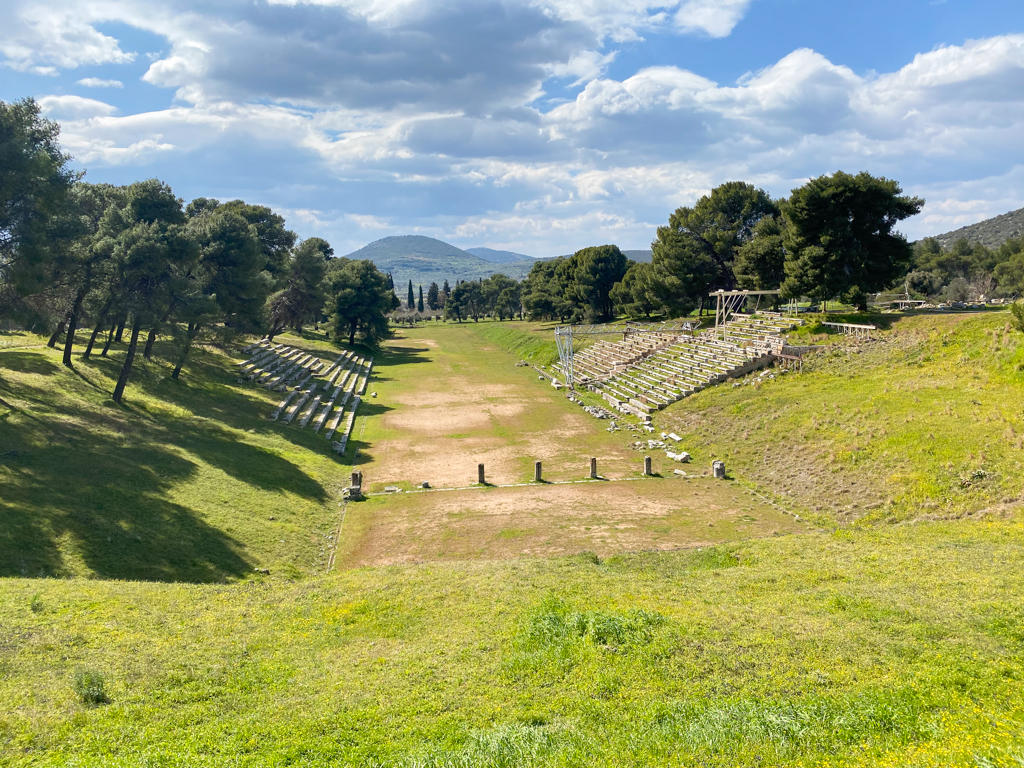
The principal monuments, particularly the temple of Asklepios, the Tholos (the term for a circular structure, often a temple) and the Theatre date from the 4th century BCE. The Theatre in particular is considered one of the purest masterpieces of Greek architecture. The stadium preserves almost 90% of its ancient form and material, which is incredibly amazing!

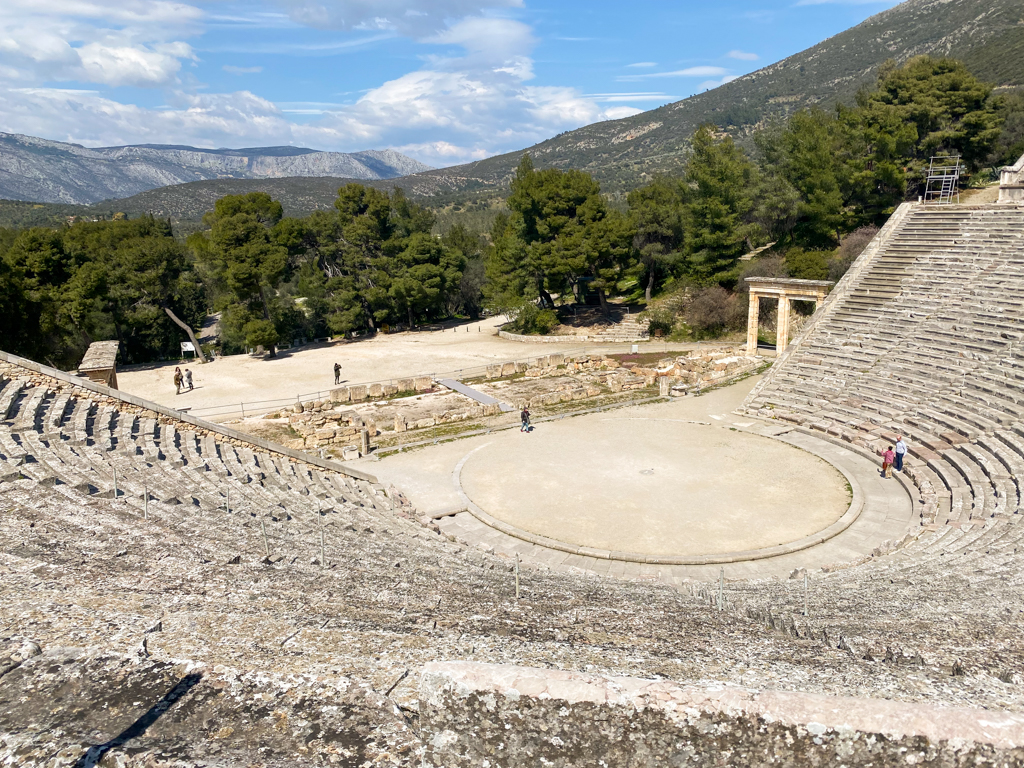
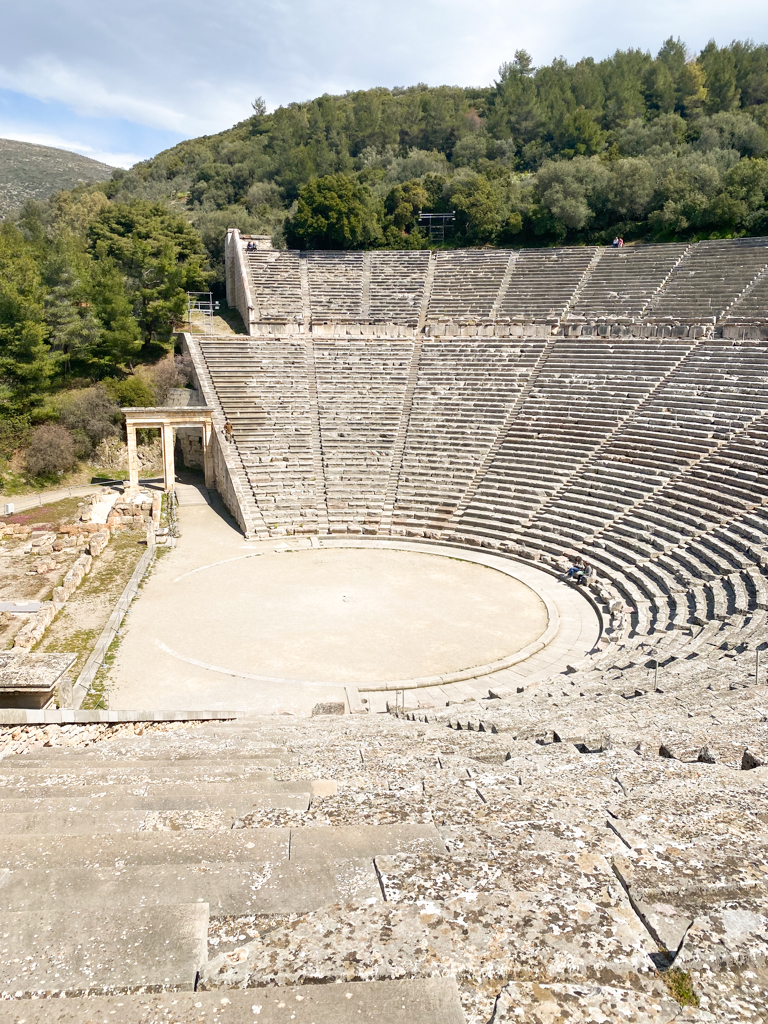
Epidaurus may have been small, but its influence certainly packed a punch. A healing cult, a fantastic theatre, the foundation of medicine in the ancient world… what a place!
Nafplio
We then drove back to Nafplio and spent some time exploring the town. Nafplio was the first capital of the modern Greek state, even before Athens. The town’s history can be traced back to prehistoric times. It’s had a few ups and downs. The town declined during Roman times but then flourished again during the Byzantine times. Frankish, Venetian and Turkish conquerors left their mark on the town and strongly influenced its culture, architecture and traditions over the centuries.
 To get a better sense of the coastline, we walked along the Nafplio walkway. The famous walking path is named “Tour of Arvanitia” and starts right after the end of the port and the last cafeteria towards the lighthouse, and ends in the square of Arvanitia. Now, full disclosure, when we got to the beginning of the walkway there was a gate that looked like it stated, in Greek, that the path was closed. However, we saw numerous locals just walk around the gate and continue on their way. I’m not sure if it has been “closed” for a very long time so the warning is obsolete. Proceed with caution and at your own risk!
To get a better sense of the coastline, we walked along the Nafplio walkway. The famous walking path is named “Tour of Arvanitia” and starts right after the end of the port and the last cafeteria towards the lighthouse, and ends in the square of Arvanitia. Now, full disclosure, when we got to the beginning of the walkway there was a gate that looked like it stated, in Greek, that the path was closed. However, we saw numerous locals just walk around the gate and continue on their way. I’m not sure if it has been “closed” for a very long time so the warning is obsolete. Proceed with caution and at your own risk!

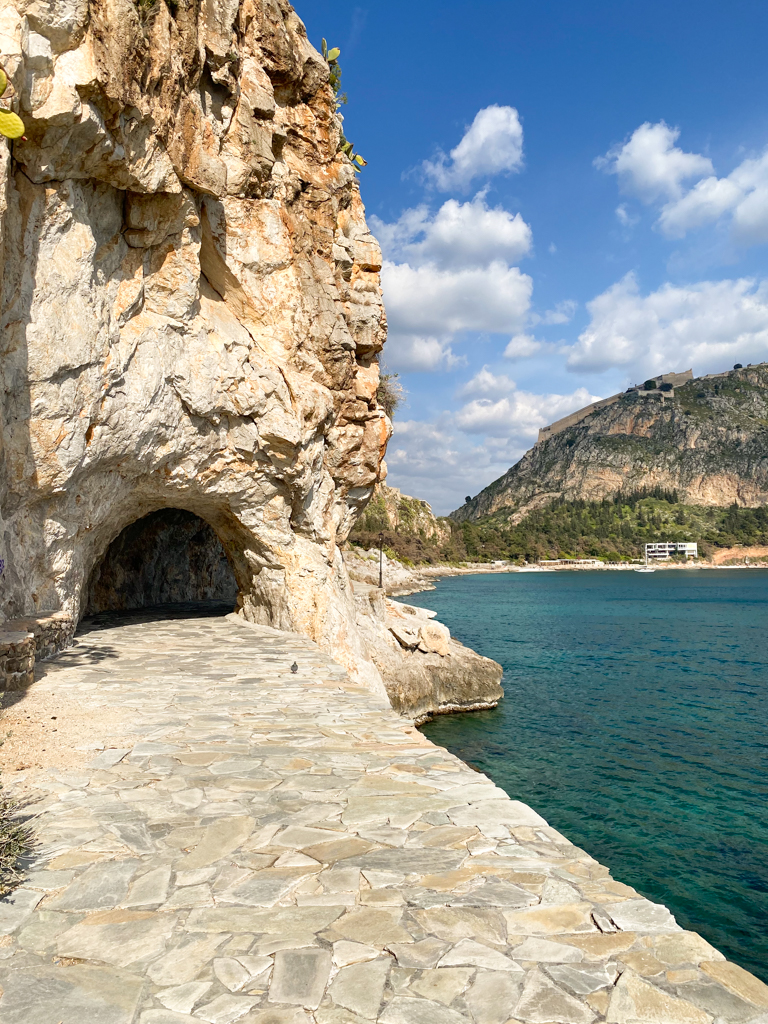
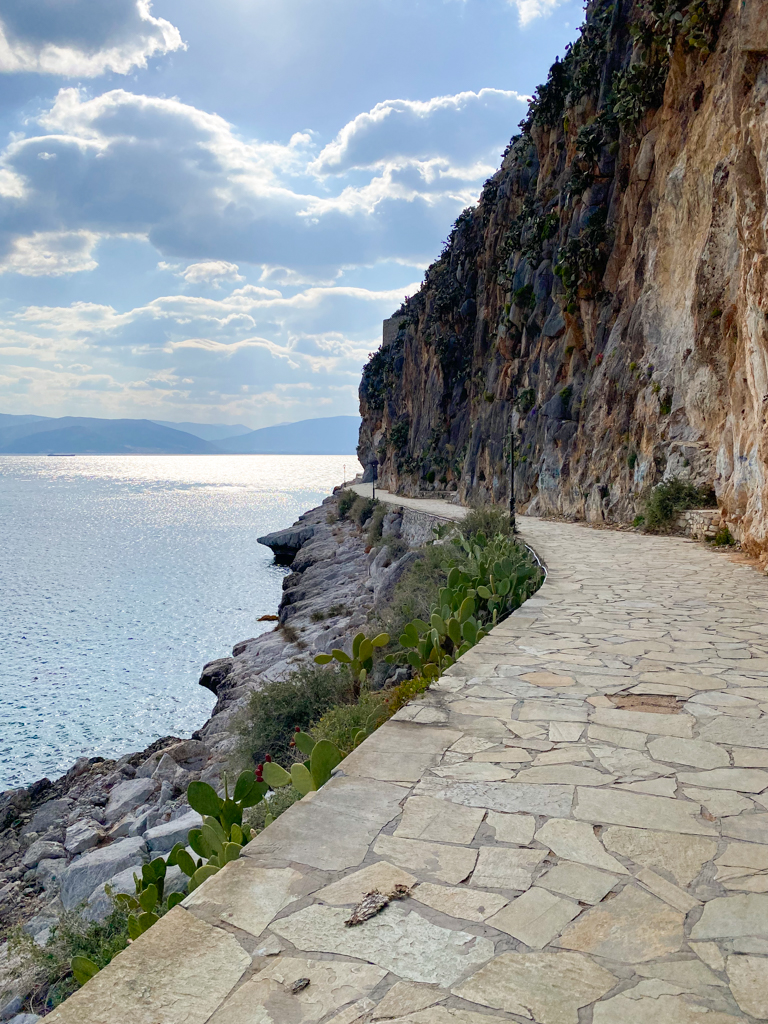
If you do decide to brave the path, it is spectacular. The view is unmatched.
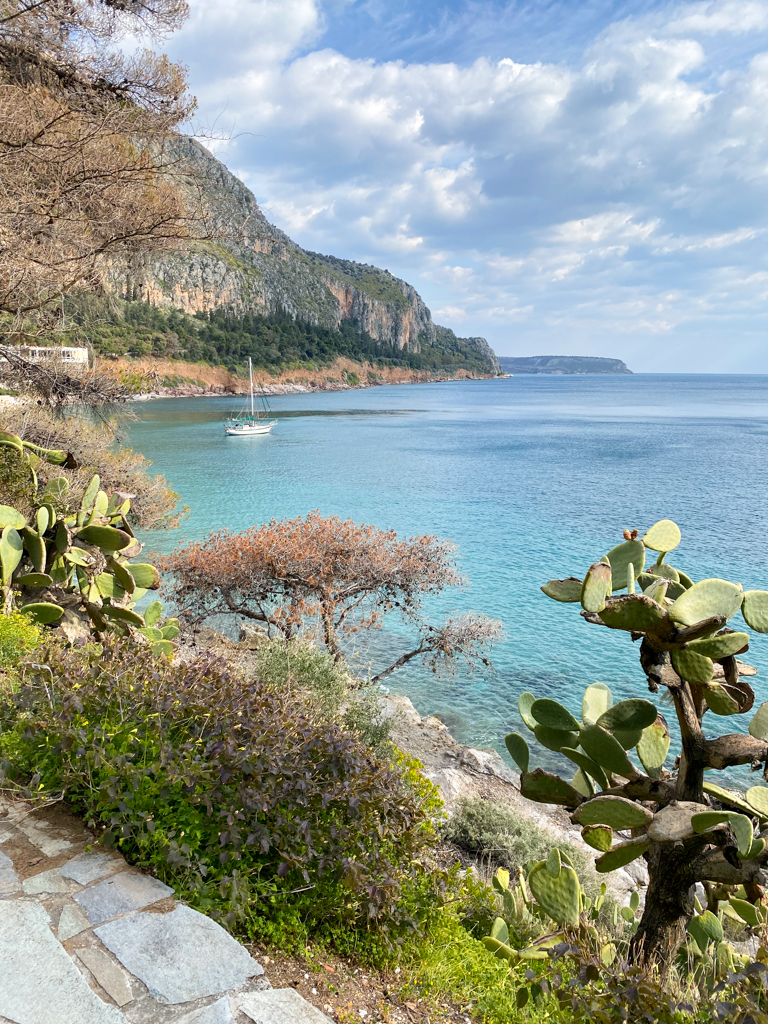
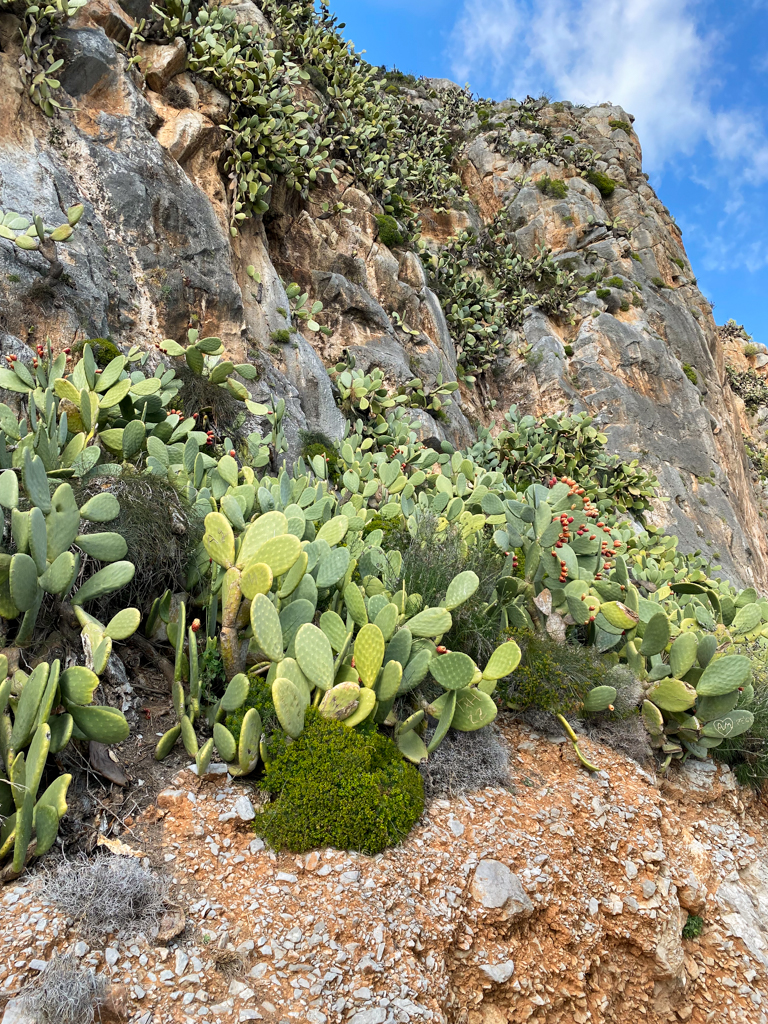
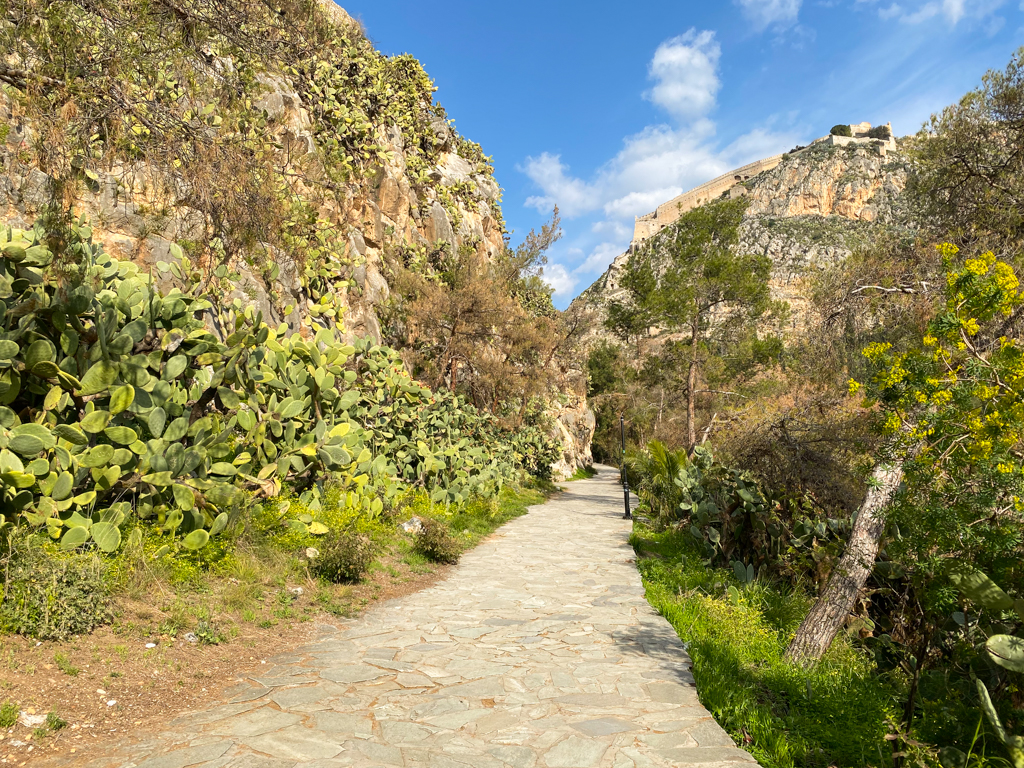
Once we reached the square of Arvanitia, we walked around the inner part of the town and then stopped for a coffee break. Greeks love to drink iced coffee all year long and it’s crucial that you understand there are two types: frappes and freddos. A freddo consists of one or two shots of espresso, shaken in a mixer and served over ice. You can also get a thick layer of foamed milk on top. It is delicious. A frappe on the other hand is made with instant coffee, water, ice cubes and sugar or sometimes even ice cream. It was invented in the 50s and is extremely popular, however, that instant coffee taste just destroys it for me. It’s no wonder that the freddo has risen in popularity over the years, it simply tastes better!

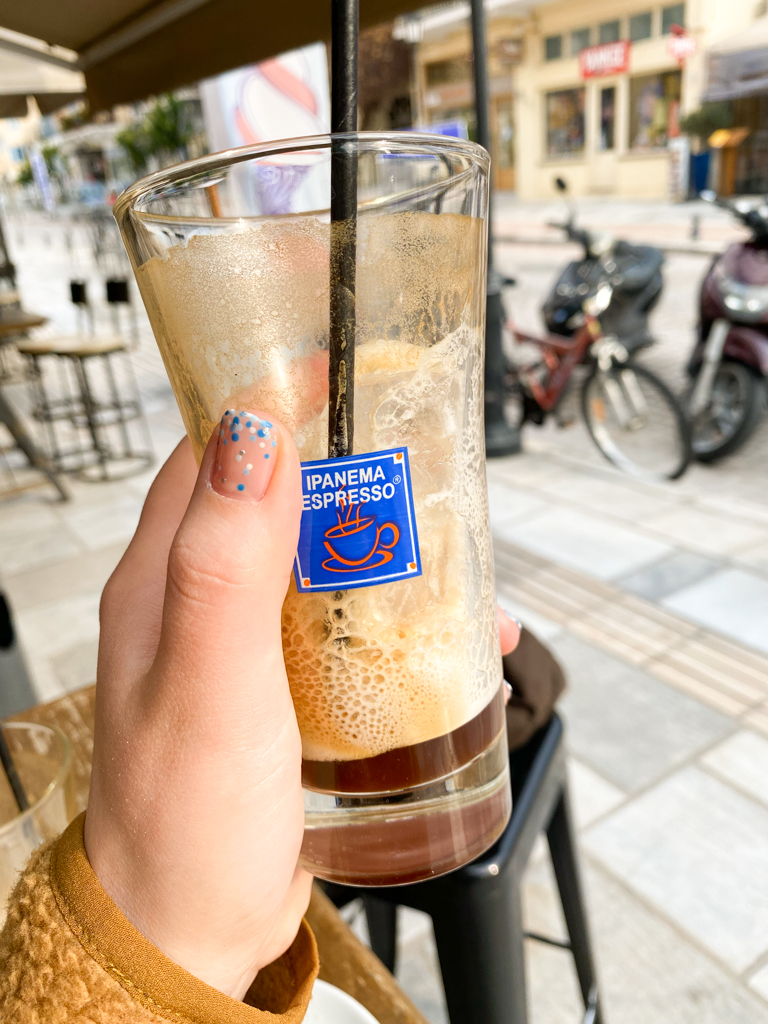
For dinner, we went to BOUNOS, a Psarotaverna (Greek fish tavern) in Nafplio. A Psarotaverna will have certain staple dishes, as well as catches of the day. It’s common to see a big display with all the fresh fish and seafood available, freshly caught that morning. We started with “Married” sardines and Taramosalata (fish roe dip). As I always say, in Greece you need to order a salad, and so we ordered a nice refreshing one. For our mains, we got Mussels saganaki and Kalamari. Saganaki refers to various Greek appetisers, which are prepared in a small, two-handled heavy-bottomed frying pan called a saganaki or sagani. Mussels saganaki is one of those Psarotaverna staples. The Greek kalamari is on average 20cm long and has a mild taste. Ours was grilled and sliced. Everything was delicious and wholesome! In Greece, you’re also almost always given dessert for free. You don’t get to pick, so it’s sort of the “house” dessert. We got two types of panna cotta that were delightful.

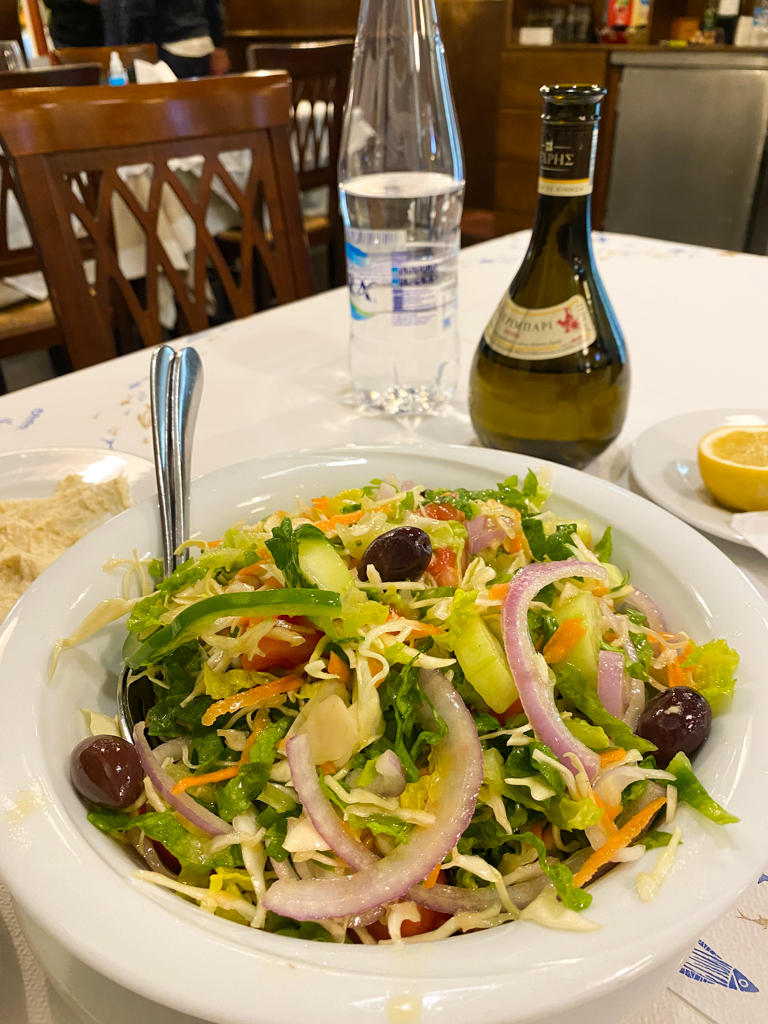
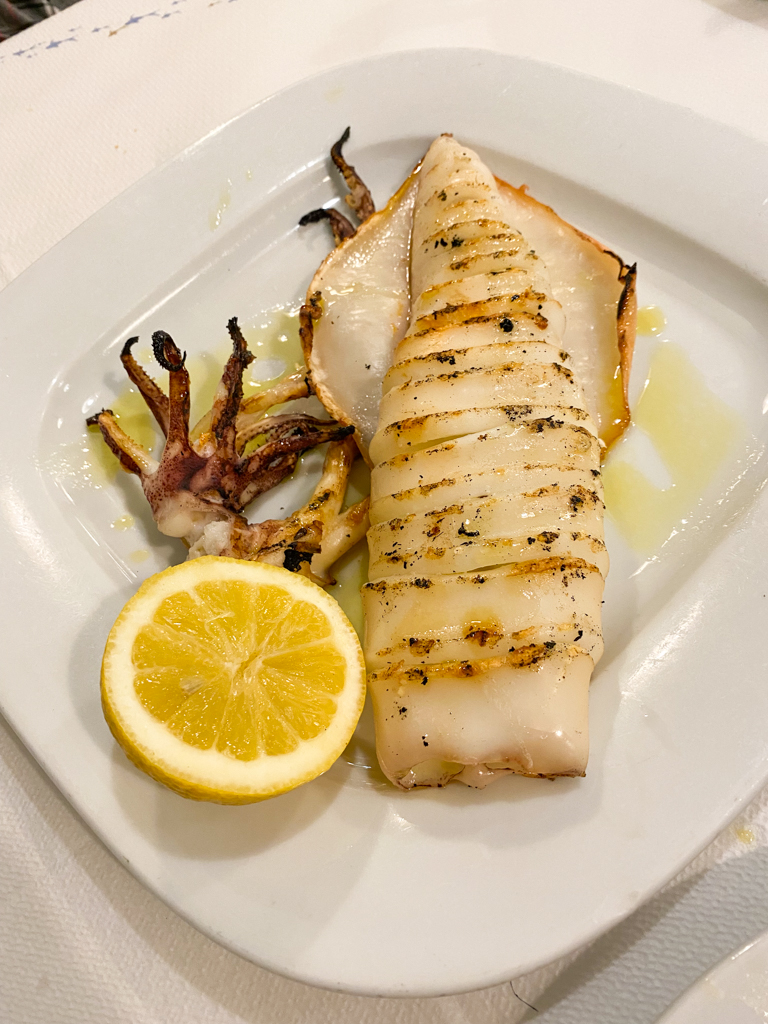

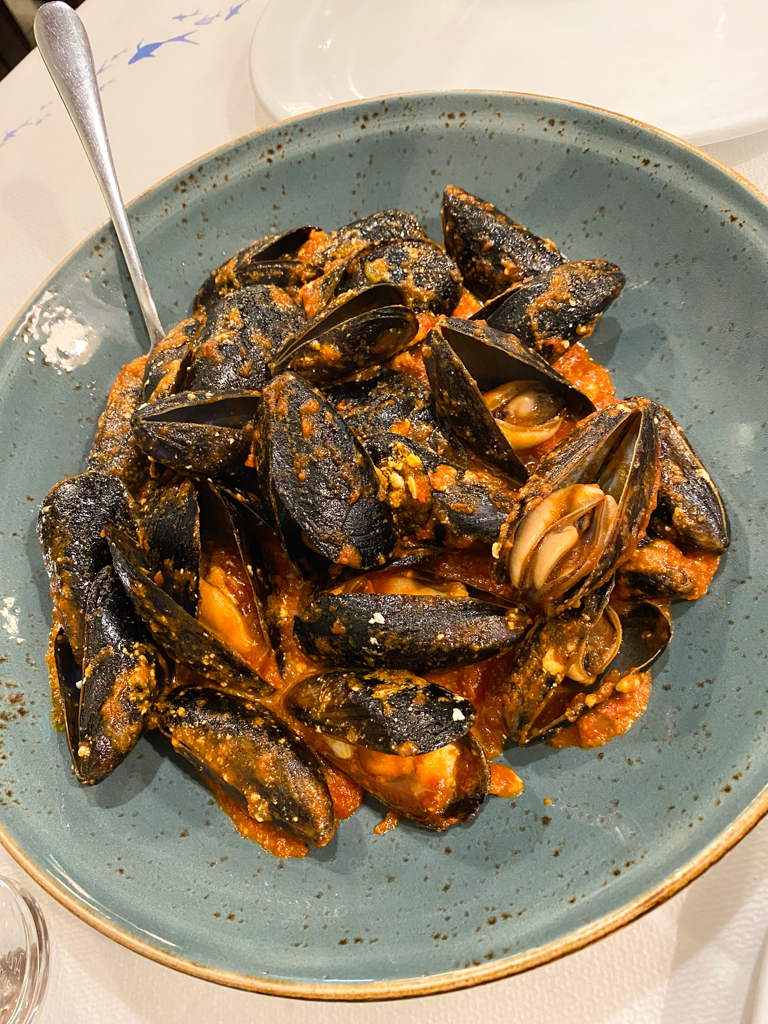
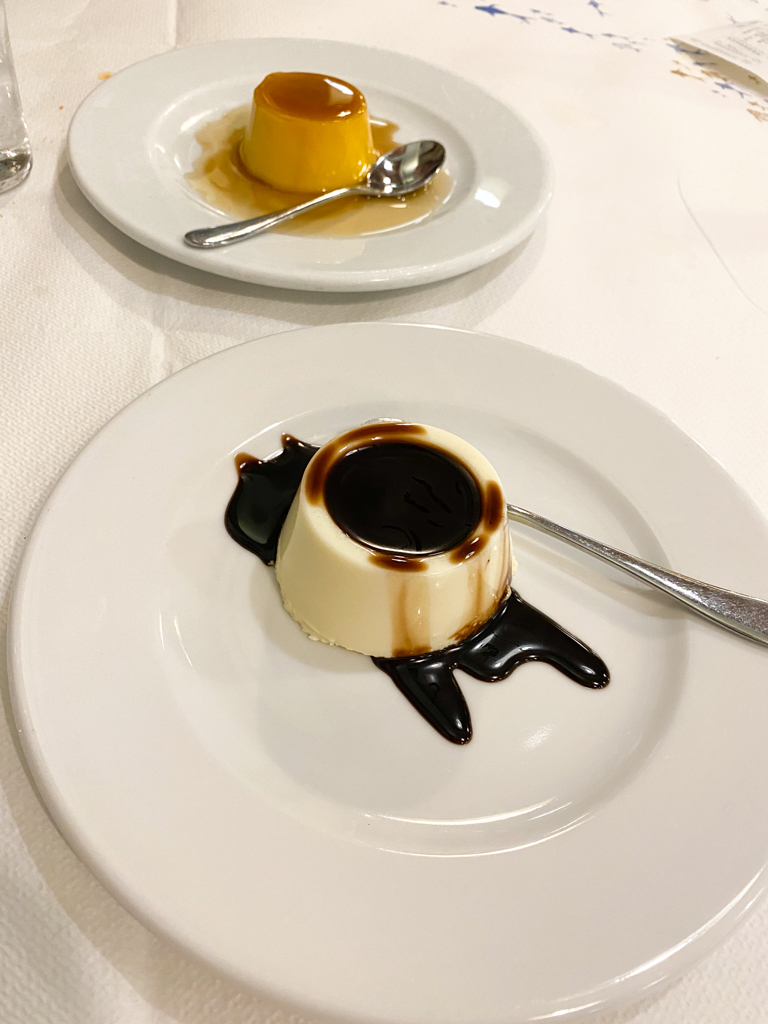
And so ended another excellent day exploring this beautiful region of the world. I must say, Mycenae and Epidaurus are super impressive sights. It was hard to imagine at this point how other sites could attempt to match the intrigue and history of these sights. But, stay tuned! There’s so much more to come. I also loved the contrast of the ruins in the morning, and then the seaside town in the afternoon: two wonderful sides of the Peloponnese.
Next up is Part III, where we head down south, deeper into the peninsula towards Sparta.

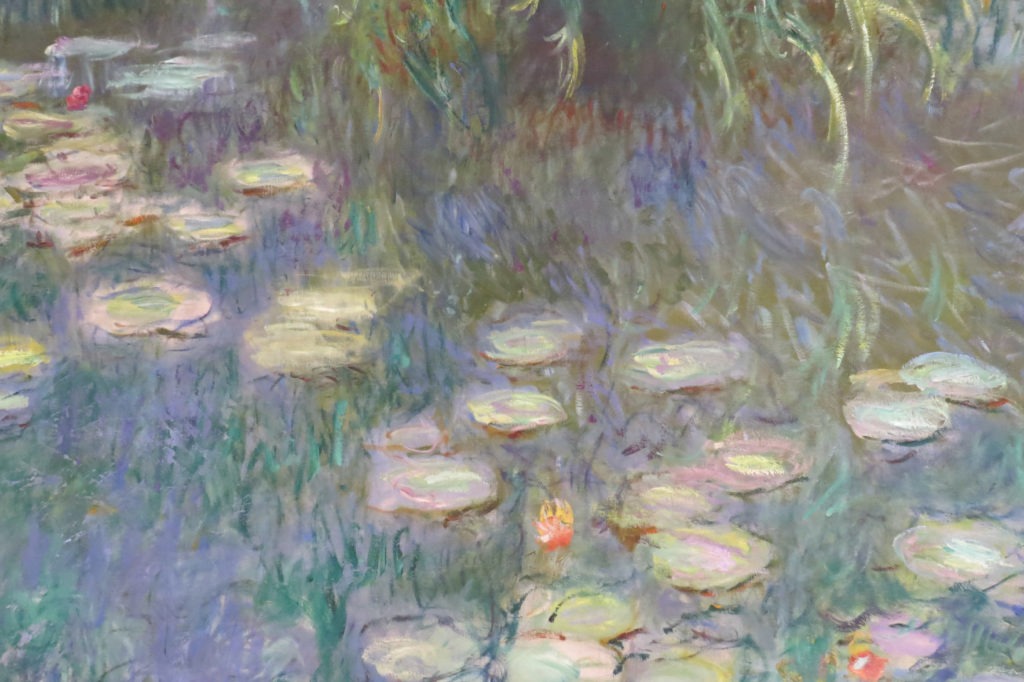
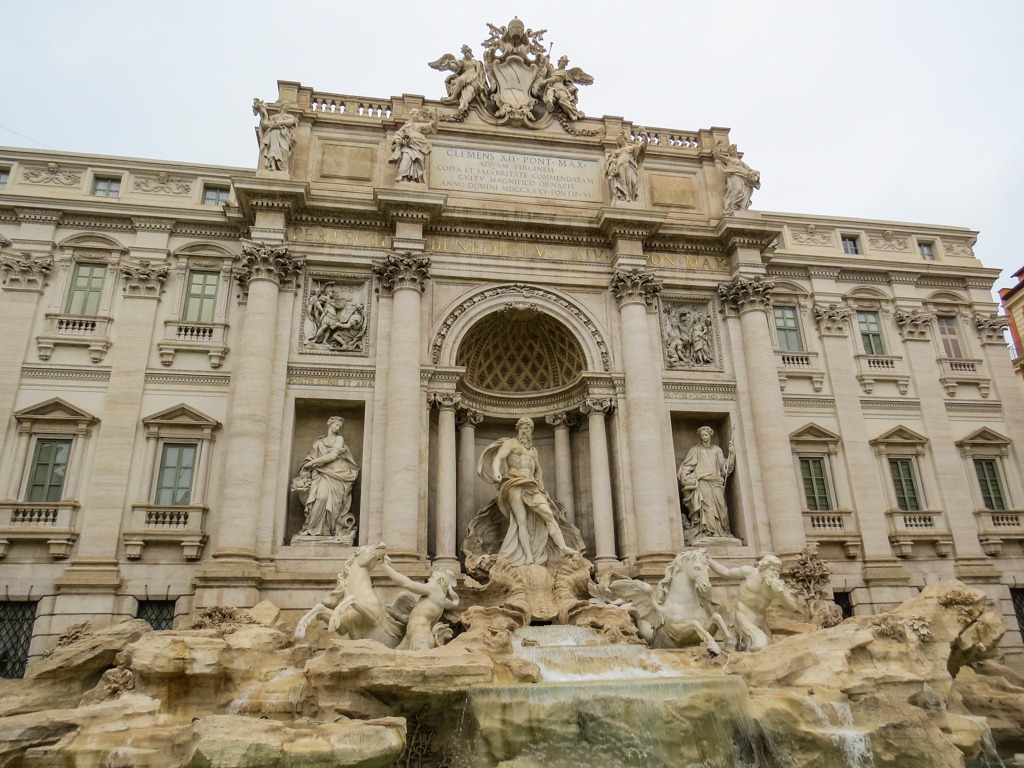
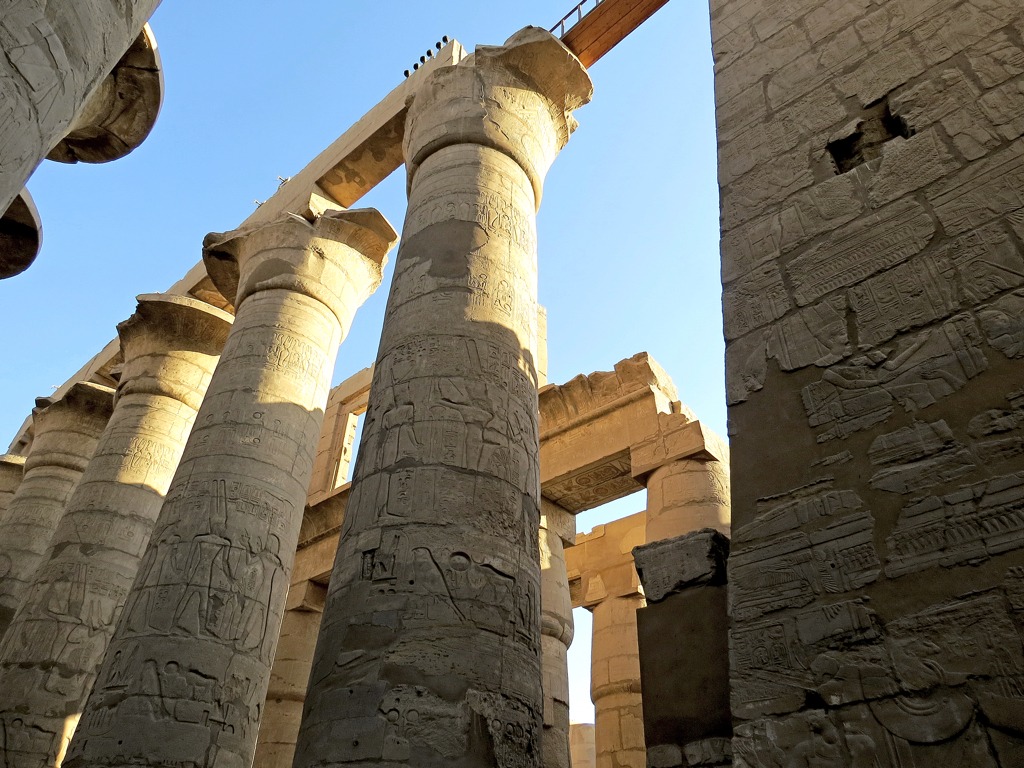
No Comments